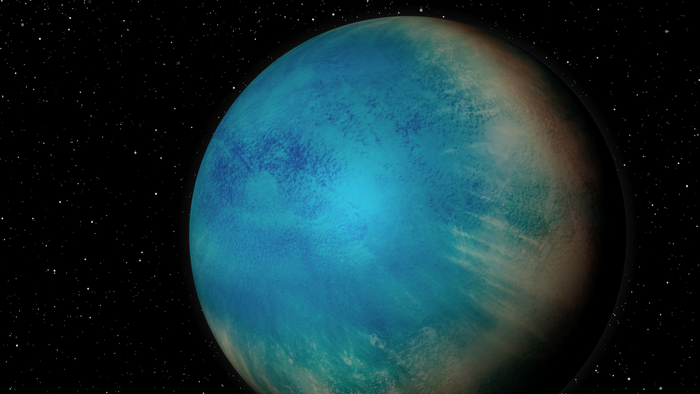Alien worlds could host more water — on the rocks — than scientist thought
Scientists find rocky alien worlds with water could be more abundant than previously thought

More planets outside our Solar system may contain water than scientists previously thought, according to a new study, though it comes with a twist — the water is likely on the rocks.
New research looking into the properties of certain exoplanets — planets orbiting stars other than our Sun — found that many of them should contain large amounts of water based on how dense they are, a surprise given that many of them orbited their stars too closely to possess abundant oceans or lakes.
“I was shocked when I saw this analysis,” University of Chicago exoplanet scientists and co-author of the study published Thursday in the journal Science said in a statement. “I and a lot of people in the field assumed these were all dry, rocky planets.”
Water being a critical ingredient for life as, the finding that many more exoplanets than once thought might contain large amounts of water could affect how likely it is that alien life might exist on other worlds.
The study examined density measurements of 43 newly discovered exoplanets orbiting M-type dwarf stars, the most common type of star in out galaxy. The researchers used the density measurements to categorize the exoplanets as either rocky, gassy, or watery exoplanets, with about one third of the planets showing up as about half rocky and half watery — planets too small to possess water in its gaseous state, but too close to their stars to host global oceans.
“It was a surprise to see evidence for so many water worlds orbiting the most common type of star in the galaxy,” University of Chicago postdoctoral researcher and first author of the study Rafael Luquesaid in a statement. “It has enormous consequences for the search for habitable planets.”
Rather than holding their water in oceans or lakes on the surface, the water on these exoplanets is likely locked in the rocky bodies of those exoplanets, or else hosted in deep reservoirs, not unlike the subsurface oceans believed to lurk beneath the icy crusts of Jupiter’s moon Europa and Saturn’s moon Enceladus.
And in one theory of exoplanet formation, these watery-rocky exoplanets might have looked a lot like Europa and Saturn at the time of their formation. In this theory, the researchers note, rocky exoplanets form at a cold distance from their star before migrating inward to their warmer, present day orbits.
But while the unexpected prevalence of watery-rocky exoplanets is exciting, Carnegie Institute for Science staff scientist Johanna Teske wrote in a related Perspective, all of the study’s results are interesting to planetary scientists.
“Although the presence of watery small exoplanets is particularly enticing, all three types of planets around red dwarfs could present potentially habitable conditions for life,” she wrote. “Leaving aside this possibility for discovering alien life-forms, measuring the compositional diversity of planets around red dwarf stars – the most common type of star in the Milky Way – is important for piecing together the complex puzzle of small planets’ formation and evolution.”
Subscribe to Independent Premium to bookmark this article
Want to bookmark your favourite articles and stories to read or reference later? Start your Independent Premium subscription today.

Join our commenting forum
Join thought-provoking conversations, follow other Independent readers and see their replies